Making the Most of Your Protein Intake
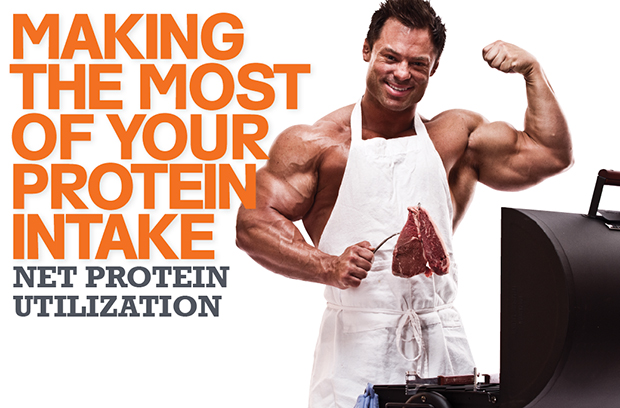
A Look at Net Protein Ultilization
There’s one aspect of diet and nutrition that virtually all bodybuilders and other athletes agree on: the need for a substantial daily intake of protein in order to build maximum muscle mass.
For years, medical and scientific authorities expressed doubt that bodybuilders and other athletes needed substantially more protein in their diets than less active individuals. But would-be physique champions generally ignored the “official doctrine” regarding protein and continued to eat many times the Recommended Daily Allowance of this nutrient.
“We never believed all that stuff about not needing a lot of protein,” explains former bodybuilding champion Armand Tanny. “Even back when I first began training with weights back in the 1940s, all of us made sure we got plenty of protein in our diets.”
Of course, until the late 1960s, bodybuilders obtained a lot of their protein from high-fat sources such as beef, whole eggs, and whole milk. As the standards for judging bodybuilding contests evolved and judges began to require bodybuilders to be ripped and highly defined as well as big, there was a noticeable shift away from these foods to protein sources lower in fat such as fish (especially canned tuna), chicken, and egg whites.
“Steak and eggs, a quart of milk a day—when I was a kid just getting into training there were plenty of established physique stars who ate this kind of diet,” says one top IFBB pro. “But by the late 1970s everyone did about a 180 degree about-face, and low-fat, high-protein diets pretty much became the norm.”
However, aside from their fat content, there is another aspect of protein intake that is less generally understood—the fact that there are many types of protein-providing foods that contain amino acids in different amounts and different proportions, which means that eating one gram of a specific protein food can have a very different effect than eating one gram of another.
For example, the quantity of protein in foods varies quite a considerable amount. Whole milk is less than 5 percent protein. Whole eggs are about 12 percent protein. Tuna is almost 25 percent protein. Turkey is nearly 30 percent. Soybeans are nearly 34 percent protein, and soybean flour tops out at something like 42 percent.
So, taking this into consideration, if you include 12 grams of tuna, you’re really only getting about 4 grams of actual protein. And because egg whites are approximately 87 percent moisture, you’d need to eat 8 or 9 grams of egg white (by weight) to get 1 actual gram of dietary protein.
But ingesting protein and having the body make use of it for activities such as building muscle are two different things. Before you build new muscle, the amino acids involved have to make it across three hurdles:
1. Digestion—they have to survive the digestive process.
2. Absorption—once they make it through the stomach and digestive system, they pass through the liver and are eventually released into the blood.
3. Retention—once they’ve been introduced into the peripheral blood supply, they have to be taken up and retained by the muscles for protein synthesis.
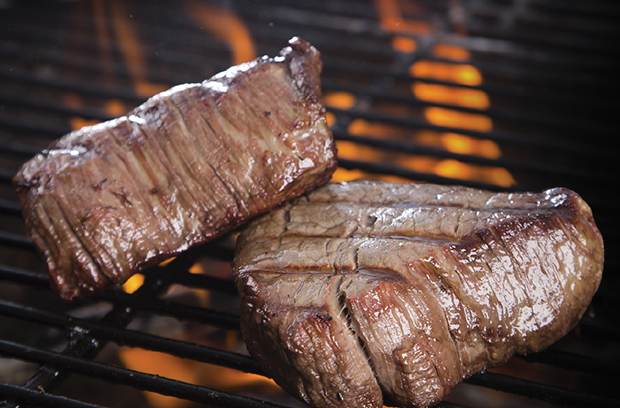
One common measure of how well ingested protein fares in this obstacle race is net protein utilization (NPU), which is concerned with how much of the protein you ingest actually ends up being retained in muscle tissue. For example, look at charts in most nutrition books and you’ll see that the NPU of egg protein is listed as being about 93 percent, that of milk about 82 percent, 80 percent for fish, and 68 percent for meat and poultry.
However, these charts can be very misleading, because digestibility is also a significant factor in how much of the amino acids you eat are going to be available to be taken up by muscle tissue. And many studies on digestibility are somewhat questionable on methodological grounds. For example, digestibility differs widely among such species as rats, pigs, rhesus monkeys and humans. The human digestion system, for example, is very close to that of rhesus monkeys, but not to that of rats. Unfortunately, most digestibility and NPU studies have been done on rats, so these charts are often highly misleading.
As an illustration, the digestibility of raw egg protein is around 93 percent for rats, but for human beings, the figure is only 50 percent, because egg protein molecules are surrounded by a coat of mucous called glycocalix, which interferes with digestion in humans unless the egg is thoroughly cooked (at which point digestibility increases to around 95 percent). Conversely, the digestibility of the milk protein casein for human beings is much higher than the usual NPU listing—virtually 99 percent.
Digestibility is one factor in choosing which protein foods to include in your diet. Obviously, cooked egg whites and milk (nonfat to reduce calories) are excellent protein sources. Bodybuilders also eat a lot of fish, but the digestibility of fish varies quite a lot. The protein in lobster, squid, and shellfish such as clams and mussels, for example, is fairly poor at surviving the digestion process. The protein in haddock, on the other hand, has a digestibility of nearly 100 percent, while shark has an digestibility closer to 72 percent.
As a quick reference, the best sources of protein for bodybuilders in descending order are:
1. Whey protein
2. Egg whites (well-cooked)
3. Milk (nonfat)
4. Fish
5. Chicken
6. Meat
Calories are also a major concern when it comes to getting enough protein in the bodybuilding diet. The caloric value of protein is approximately 4 calories per gram, so the caloric intake of a 200-pound athlete eating around 200 grams of protein per day would be 800 calories, low enough even for a contest-preparation diet.
Regardless of the digestibility or NPU of protein sources, bodybuilders would have little to worry about if they could simply eat as much protein food per day as they wanted. But success in bodybuilding competition involves attaining low levels of body fat as well as massive muscles, so would-be competitors can’t afford to take in all the extra calories that kind of diet would provide.
One way to get around this problem is to augment amino acid intake in the diet with one kind or another of protein supplement. There are, for example, various kinds of protein powders on the market that have been processed so that they contain a very high quantity of protein with very few extra calories included. However, be advised that the quality of that protein, its digestibility, its NPU, and its biological value can differ significantly from one protein powder on the market, depending on the protein food from which it was made and, in some cases, the process used in its manufacture.
In general, the best sources of supplementary protein powder that have available up until now are, in descending order:
1. Whey protein
2. Lactalbumen (milk protein)
3. Casein
4. Dried egg (value cut in half by poor digestibility)
5. Soy protein
Another popular way of supplementing protein intake is with the use of amino acids, of which there are basically two kinds:
PEPTIDE AMINO ACIDS
These are short chains of amino acids, which are the enzyme digests of usually milk or sometimes egg protein. (This differs from the egg protein described above in that the entire protein food goes through a digestion process, whereas only the glycocalix covering is digested with the powder.)
FREE AMINO ACIDS
These are very pure, free-form amino acids produced by the action of yeast and other microorganisms working on substances such as sugar-beet tops. The resulting free-form aminos are then purified to the crystalline form in which they are sold to the public. These amino acids are up to four times more costly than peptide amino acids.
Different types of amino acids become available for energy production and protein synthesis more or less quickly after being ingested. When you’re building muscle, it’s important to get all the amino acids in the blood at the right time—a two-hour “window” after exercise when muscles are absorbing tremendous amounts of amino acids and the most protein synthesis is taking place. You need a balanced amino acid profile in the blood, so it’s not desirable for some amino acids to show up quickly and others to blast into the blood three hours later.
Peptide amino acids are relatively small and take advantage of a mechanism that shuttles them from the intestines to the blood, breaking them into constituent amino acids in the process and making them available all at the same time for protein synthesis.
The rate at which the larger free amino acids become available for protein synthesis differs from one amino acid to the next, depending upon molecular weight. Some absorb relatively quickly, while others may take several hours. This disparity in absorption rates means that it is unlikely you would end up with the balanced profile of amino acids necessary for efficient protein synthesis.
However, free amino acids are excellent sources of large amounts of specific amino acids—such as arginine when you’re attempting to turn on GH production, or leucine to prevent the catabolism that occurs on a low-carb diet, which is discussed in more detail below.
Protein supplements can be taken at any time of day, but they are most useful just before, during, or immediately after your workout. As mentioned above, you have a two-hour window after training in which protein synthesis is at its maximum, and the quicker you get the amino acids into your system, the better. Taking peptide amino acid supplements at this point works for two reasons:
1. The amino acids get into your system much faster than if you had to digest a protein food.
2. You can ingest fairly large amounts of amino acids in supplemental form while taking in very little bulk, whereas trying to eat enough protein food before or during a workout to supply the necessary amino acids would overload your stomach during training.
How much in the way of amino acid supplements should you take in conjunction with your workouts? Roughly one gram per pound of your ideal contest weight (if you use your off-season weight as a reference, you’ll be including a lot of fat as well as lean body mass in the equation, and you don’t need to feed protein to fat) before or during your training session. This means that a 200-pound bodybuilder in good shape would need about 20 grams of amino acid supplement.
One other factor to consider is the protein-sparing effect of carbohydrate. The presence of plenty of carbohydrate in your body allows you to make the most efficient use of protein. Conversely, when your diet is deficient in carbs, such as when you’re on a strict contest diet (or following one of the current fads for carbohydrate-deprivation diets), your need for protein goes up sharply, in part for the simple reason that your body begins to burn up a larger proportion of amino acids for energy to make up for the missing carbohydrate.
Additionally, since you’re going to burn up some amino acids for energy during every workout and oxidize even great amounts when you’re on a diet, one way to ensure that you still retain sufficient amounts of necessary aminos to support protein synthesis is by taking extra supplements of the amino acid leucine.
Leucine is very quick to find its way into muscle tissue and to be oxidized for energy. Therefore, if you give the body a good supply of leucine, it will burn up that particular amino preferentially, allowing for a greater amount of the remaining protein to be used for protein synthesis.
WHERE’S THE BEEF PROTEIN?
Not all cuts are beef are created equal—especially if the protein to fat ratio is your criteria. For bodybuilders and fitness enthusiasts who love their beef, we recommend these extra-lean cuts:
Eye of Round (Protein-to-fat ratio: 7:1)
Sirloin Tip Side Steak (Protein-to-fat ratio: 7:1)
Top Sirloin (Protein-to-fat ratio: 5:1)
Bottom Round (Protein-to-fat ratio: 4:1)
Skirt Steak (Protein-to-fat ratio: 2.5:1)
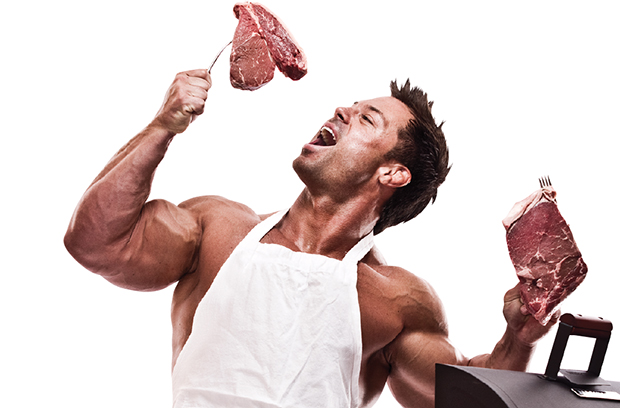
CUTS OF BEEF TO AVOID
While these cuts of beef may be tasty due to their fat content, we suggest you steer clear of the following cuts:
Rib-Eye Steak (Protein-to-fat ratio: 1:1)
T-Bone Steak (Protein-to-fat ratio: 1.2:1)
Porterhouse Steak (Protein-to-fat ratio: 1.5:1)
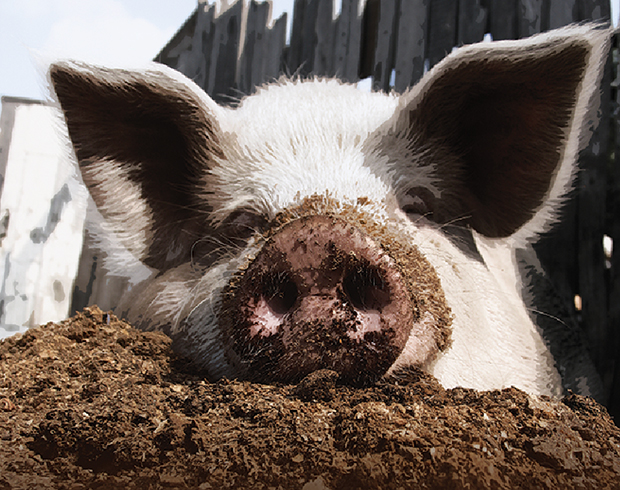 PIGGING OUT
PIGGING OUT
While certain pork cuts (such as cuts from the belly, side and back of the pig—where you get meat for bacon or sausages) are high in fat, there are cuts that are very lean. The pork tenderloin is probably the leanest cut from the pig. And best of all, pork tenderloin can be extremely affordable. So just how lean is this particular cut? A 3-ounce serving of pork tenderloin contains 22 grams of protein and only 3 grams of fat. It even gives chicken a run for its money. According to the USDA, pork cuts from the loin are leaner than skinless chicken thighs.
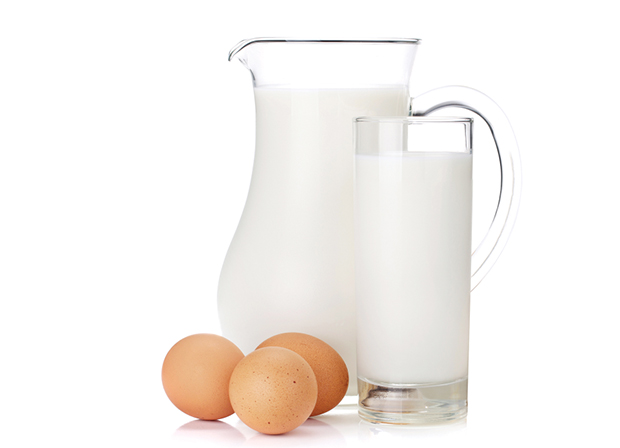 MLK & EGGS
MLK & EGGS
The average egg contains about 6–7 grams of protein.
An extra-large egg (56 grams)has 7.3 grams of protein.
An 8-ounce glass of skim milk, also referred to as fat-free milk, contains approximately 8.5 grams of protein. Nearly 40 percent of the 90 calories in an 8-ounce glass of skim milk come from protein.
GRILLING MEAT 101 ON A GAS GRILL
1. Turn on your gas grill and leave the hood closed for about 10 minutes. This will not only get your grill nice and hot, but also burn off all excess residue that may have accumulated from prior usage.
2. While your grill is heating up, take this time to tenderize your meat using a tenderizing mallet.
3. Season your meat using any type of seasoning that suits your taste. Always a solid choice is to season meat with salt and pepper, and brush on a light coat of olive oil. IMPORTANT: Don’t go crazy with the oil. Just give it a light brushing or rub. Using too much olive oil on the meat will often lead to flare-ups, which will cause the meat to burn and become carbonized. This often leads to an unpleasant ashy flavour.
4. Place the meat cuts on the grill and do not move them until the grill lines and browning (known as the “Maillard reaction”—the chemical reaction between amino acids and reducing sugars that gives browned food its distinctive flavour) occurs on the entire surface of the meat.
5. Flip the meat over using a spatula rather than using a fork. The prongs of a fork will puncture the meat and lead to a loss of juices.
6. A steak will cook a little after you remove it from the grill, so stop cooking when the meat is slightly less done than desired. Resting meat—letting it sit off heat for a few moments before slicing or serving it—is believed to also help it retain more juices.
DEGREES OF DONENESS
If you want to ensure you cook your meat to a desired level of doneness, it is important to use a meat thermometer. Insert the thermometer into the thickest part of the steak to take your temperature reading.
Steak Doneness Remove from Grill at this Temperature
Rare 130°F to 135°F
Medium Rare 140°F
Medium 155°F
Well Done 165°F
 SOMETHING FISY GOING ON
SOMETHING FISY GOING ON
When it comes to protein content it is hard to beat fish. But bodybuilders and fitness enthusiasts also benefit greatly from the omega-3 fats (what we call “good fats”) found in fish.
Here are some of our favourite types of fish that we recommend to our readers: Halibut, Alaskan Cod, Pacific Albacore/Yellowfin Tuna, Grouper,
Catfish, Arctic Char, Sardines, Rainbow Trout, and Alaskan Salmon.
 CHICKEN BREAST VS. OTHER BIRD MEATS
CHICKEN BREAST VS. OTHER BIRD MEATS
While powdered protein may be the number one choice for bodybuilders, when it comes to choosing from the animal kingdom, chicken breast still reigns supreme. Forget the deep fryer and the Colonel’s 11 herbs and spices—boiled, baked, or grilled is the way to go when preparing this protein-packed poultry.
But are there other bird meats higher in protein than the mighty chicken breast? Of course, but chicken remains the most affordable option and is always a tasty choice. But for you out there that wonder how chicken breasts stacks up to other birds in protein content, we’ve got you covered:
Meat per 100 g Protein
Ostrich 29 g
Partridge, Gray 25.6 g
Pheasant, Wild 25.7 g
Turkey, Wild 25.7 g
Chicken Breast 24.4 g
Turkey, Domestic 23.5 g
Emu 23 g
Duck 19.9 g

